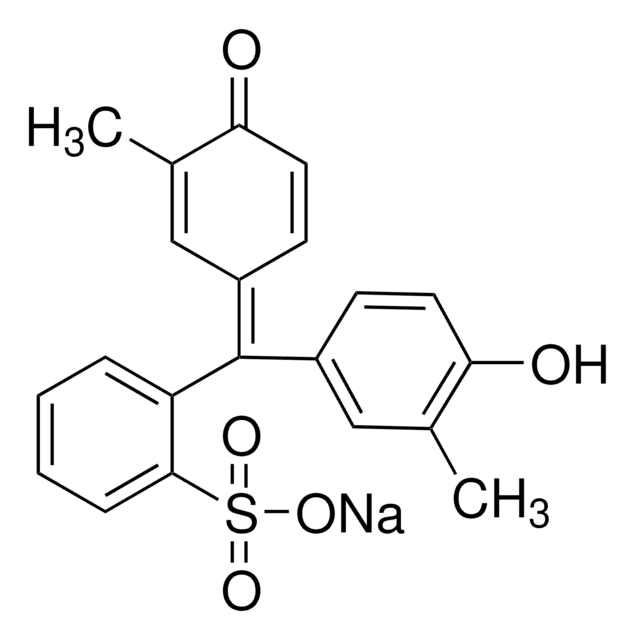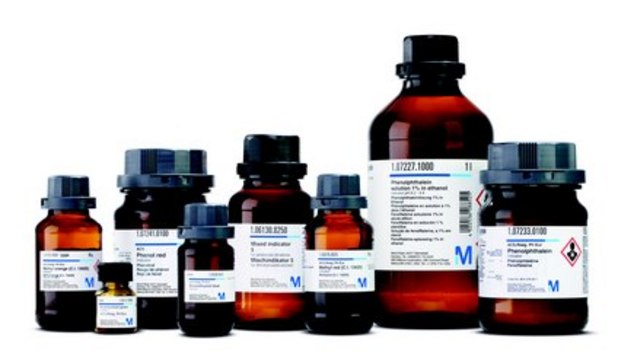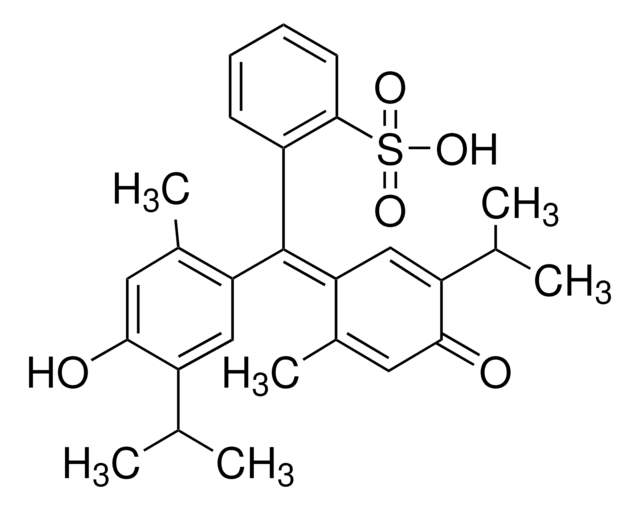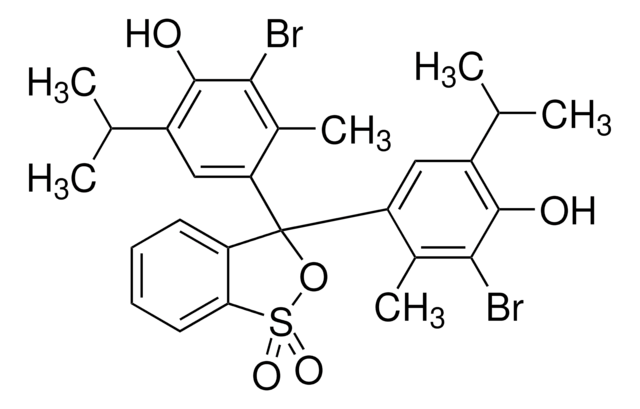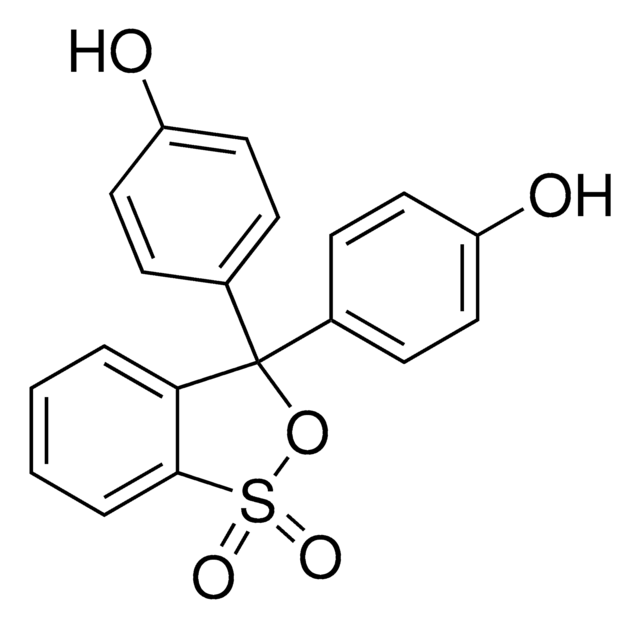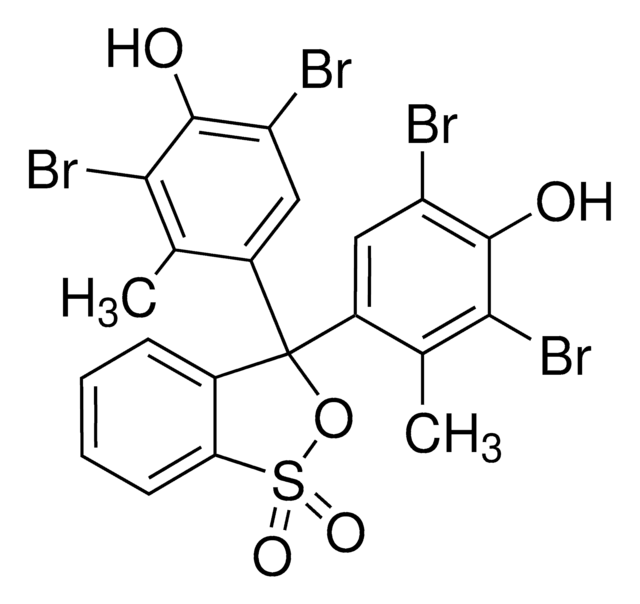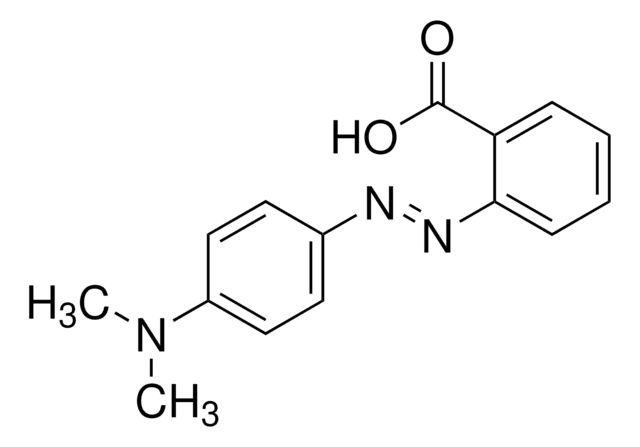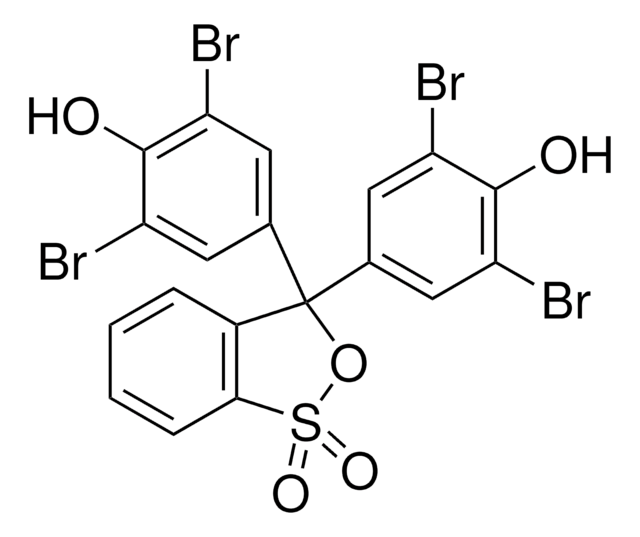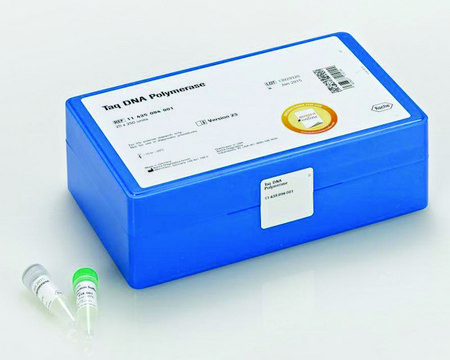114472
Cresol red
indicator grade, Dye content 95 %
Synonym(s):
o-Cresolsulfonphthalein
About This Item
Recommended Products
grade
indicator grade
Quality Level
form
powder or crystals
composition
Dye content, 95%
technique(s)
titration: suitable
color
red-brown
pH
7.2-8.8, yellow to red
useful pH range
1.8-2.0, orange to yellow(acid)
7.0-8.8, yellow to violet(alkaline)
mp
290 °C
density
0.998 g/cm3
λmax
367 nm (2nd)
570 nm
application(s)
diagnostic assay manufacturing
hematology
histology
storage temp.
room temp
SMILES string
Cc1cc(ccc1O)C2(OS(=O)(=O)c3ccccc23)c4ccc(O)c(C)c4
InChI
1S/C21H18O5S/c1-13-11-15(7-9-18(13)22)21(16-8-10-19(23)14(2)12-16)17-5-3-4-6-20(17)27(24,25)26-21/h3-12,22-23H,1-2H3
InChI key
OBRMNDMBJQTZHV-UHFFFAOYSA-N
Looking for similar products? Visit Product Comparison Guide
General description
Application
Storage Class Code
11 - Combustible Solids
WGK
WGK 3
Personal Protective Equipment
Choose from one of the most recent versions:
Already Own This Product?
Find documentation for the products that you have recently purchased in the Document Library.
Our team of scientists has experience in all areas of research including Life Science, Material Science, Chemical Synthesis, Chromatography, Analytical and many others.
Contact Technical Service